2012 marked the 10 year anniversary for The Seldoms, a small contemporary dance theater company based in Chicago. In their decade working in the city, artistic director Carrie Hanson and her band of loyal dancers have diligently sustained the relevance of their art in the windy city.
The Seldoms, a non-profit company, labels itself as a dance company that physically investigates contemporary issues, art and historical ideas. Hanson’s opportunities and interests have vastly changed since her beginning in 2002, now with works on America’s faltering economy and global warming in her repertoire and international collaborations on her résumé.
“I’m interested in expanding what people think dance can do’… Hanson said, ‘it’s shaping and it’s quality and it’s experience and we can learn something about all of these complex issues that we’re trying to grapple with.”
Hanson’s first documented work for The Seldoms was “Ode” in 2003. “Ode” is performed as a trio, paying tribute to the original Seldoms; an English performing group from the 19th century. A sort of homage piece, playing with the friction that arises when stationary bodies are contrasted with tense, sharp movement, “Ode” is much different than Hanson’s most recent work, “Exit Disclaimer: Science and Fiction Ahead” that premiered at Columbia College Chicago’s Dance Center in October. This piece was centered around global warming. Her motives in creating work has distinctly changed in the past decade.

It is especially evident in “Stupormarket” and “Exit Disclaimer: Science and Fiction Ahead” that Hanson’s interests are shifting to look at what’s happening on the global stage. Whether or not this affects their patronage, one cannot be sure. It’s no doubt that if a person brings viewpoints that contrast the work’s voice, some friction is going to occur. But perhaps it goes deeper into society’s ideal of what dance is supposed to be.
“People either don’t believe dance can speak to certain topics, or they don’t want dance to speak in that way,’ They want to see virtuosic dancing…that is easy or trite.”
Philip Elson, dancer and The Seldoms’ new technology coordinator, said amongst everything else he has going on, The Seldoms is his top priority.
“To sustain a dance company, you have to freaking love it,” said Elson, “it’s almost like evangelicalism for dance.”
Elson was still a student when invited to audition for The Seldoms in 2008. He has spent four seasons with the dance company, and this past season has been the first Elson has given a volunteered contribution to The Seldoms with his role as technology coordinator. He has revamped the company’s website, created promotional videos, organized the company’s private Vimeo and YouTube accounts, and has continued to archive performances. The Seldoms rely on in-kind contributions like Elson’s to stay on budget. Elson is one of the six-person company, most of who have all been with Hanson for the past five years or so.
“We know each other, we work together really deeply, and that serves me hugely,” said Hanson about her dancers.
This solidarity may be key in The Seldoms’ growth and popularity within the city. Patrons of The Seldoms are beginning to recognize the dancers from one show to the next, serving as a stabilizer for the audience when each work utilizes a different idea. However, after all the many possible aspects of The Seldoms’ growth, the bottom line is that patronage is necessary to continue Hanson’s work.
“…I would hope that audiences would want to come see it, but honestly the economy is tough, and it’s hard to get audiences to come see it; its always a struggle,” says Surinder Martignetti, The Seldoms’ board president.
Martignetti’s role as board president requires being active in Chicago’s performing arts community and figuring out how to draw larger crowds for each performance. She mentioned that after The Seldoms’ 2010 performance of “Marchland” at the MCA, their presence on Chicago’s art map did magnify, but ticket sales are still a struggle.
“I wonder why we don’t have a little more commercial success and why ticket sales are really difficult, ‘ said Martignetti, ‘Maybe that’s just my bias because I really like this work.”
Molly Strom, 21, a dance student at Columbia College Chicago, has seen The Seldoms perform “Thrift”, “Stupormarket”, and “Exit Disclaimer: Science and Fiction Ahead”. For Strom, knowing the dance pieces she is seeing are loaded with issue-based content helps her prepare for the performance. She understands what she is about to see and can focus on other elements of the piece, such as the virtuosity of the dancer’s technique and the quality of the choreography being presented.
Just like any other business, finance is a primary driving force behind what The Seldoms are able to create.
“You see a big bucket of money that has been available for artists of a certain discipline to do certain projects, and so, sometimes, the funding leads the way,” said Hanson.
For small dance companies, the way to receive funds is through private and state grants. The Seldoms receive funding primarily through private grants. These grants are numerous and range in the size of rewards given. They all require long applications and written essays petitioning for the grant to give their particular company funding. The Illinois Arts Council gives Illinois’s primary state grant. Hanson said she doesn’t apply for the IAC grant anymore because the workload for receiving those grants is too cumbersome to justify the small reward given. A grant coming from the MacArthur Foundation, a Chicago-based grant company applied internationally gives much larger rewards and presents opportunities for direct community engagement. Receiving a grant such as the MacArthur Foundation secures a bit of longevity for The Seldoms in Chicago.
“When I was working 20 hours [on the grant proposal] and only receive $1500, you have to start to weigh things like that,” said Hanson.
The next step for Hanson and The Seldoms is to compete for national funding programs. The national funding programs for performing artists offer larger funds and larger networks for a variety of artists, Hanson said, giving them security of sustainability. The more people you know the more people will notice if you’re gone.
Related articles
 Theater And Dance Take Center Stage(cityofchicago.org)
Theater And Dance Take Center Stage(cityofchicago.org)





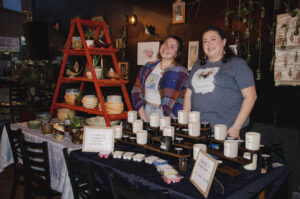
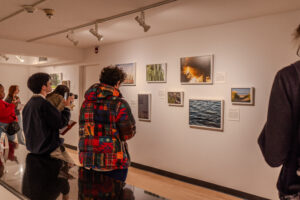
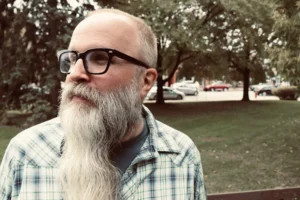





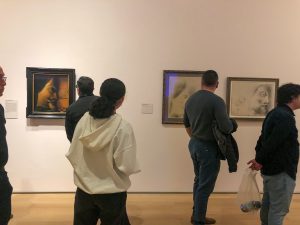
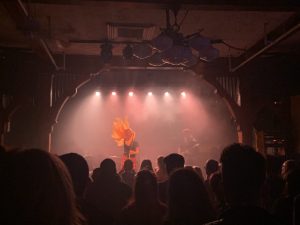

Be First to Comment